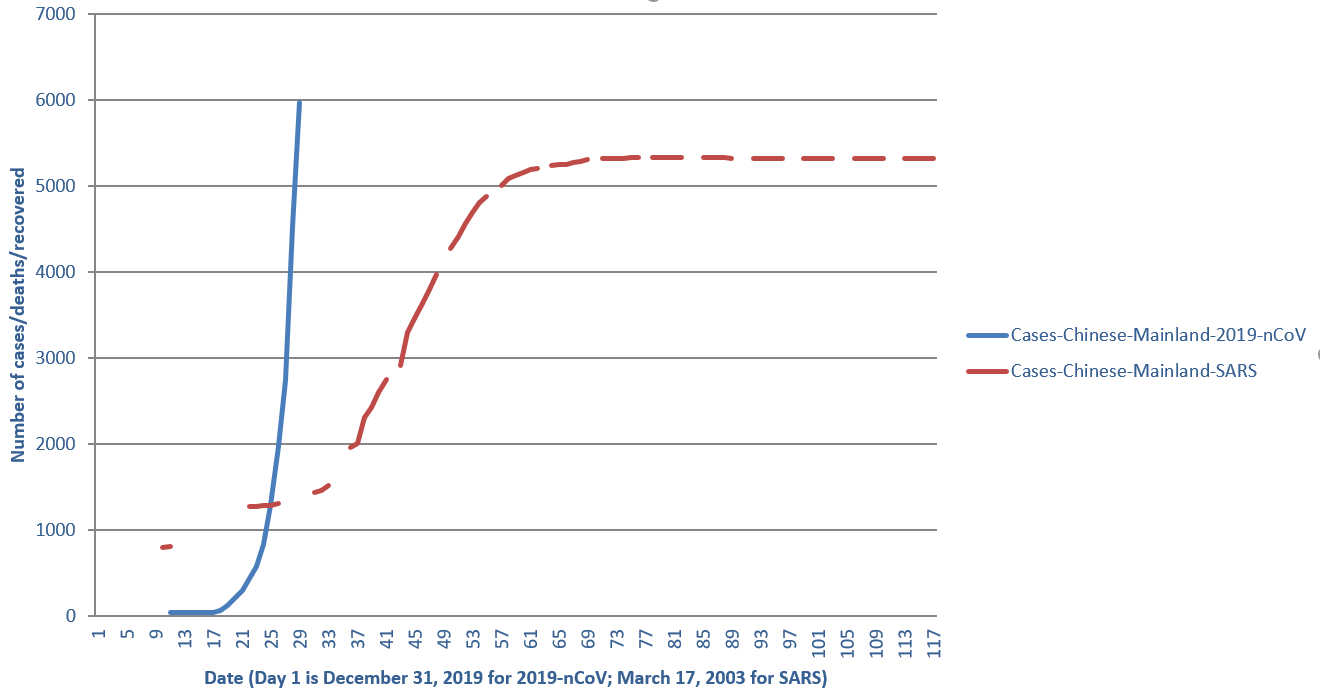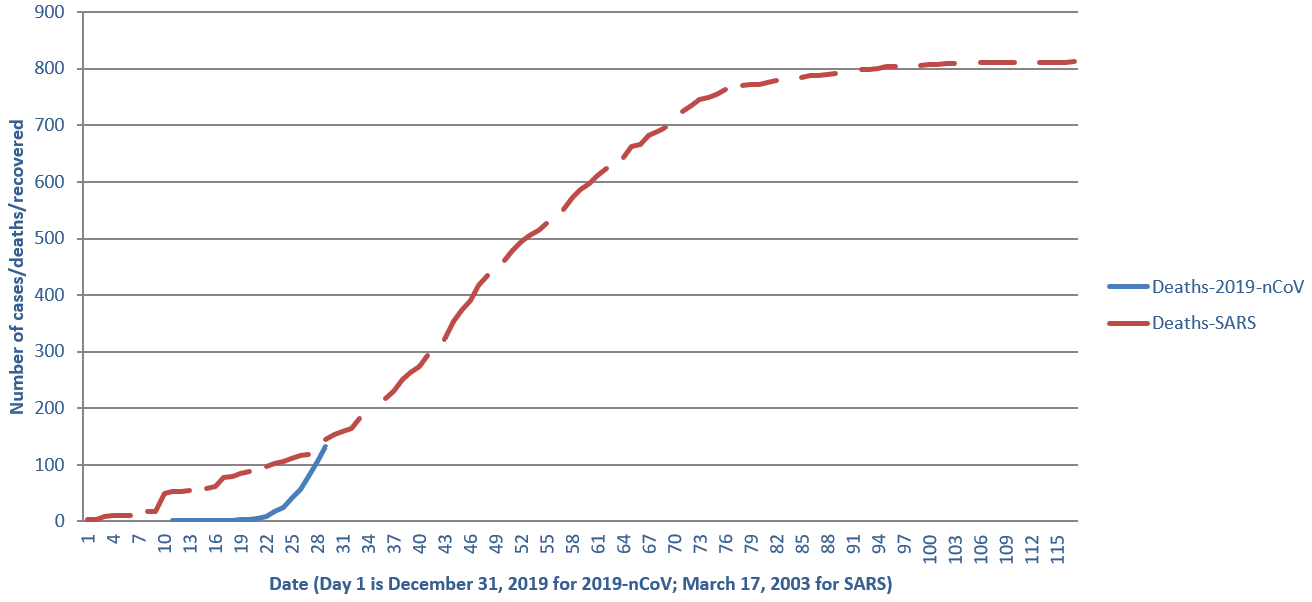
The novel coronavirus, or 2019-nCoV, is spreading fast in China, especially the origin point, the city of Wuhan.
As of January 29, more than 6,000 people have been infected by the virus – more than all the SARS patients in China back in 2003.

The number of cases reported during 2019-nCoV and SARS outbreak in China. /CGTN Photo
The picture doesn't look good. The novel coronavirus is spreading faster and showing no signs of slowing down.
The good side is that a brake is being hit. As estimated by Zhong Nanshan, China's "SARS Hero" who discovered the virus in 2003 and helped to stop the outbreak, the novel coronavirus will reach its peak in "seven to 10 days."
It can be estimated that nearly 12,000 people will be infected in 10 days if the virus goes on spreading at the current speed and follows the SARS pattern.
This is a very rough estimation, which shouldn't be treated as official information from the Chinese government.
The claim "novel coronavirus is worse than SARS" has become more solid than three days ago, when we publish the first analysis.
Last time, we said that coronavirus is less lethal than SARS. Data showed SARS has a mortality rate of roughly 10 percent and coronavirus' rate is less than half of that.

Number of death cases of 2019-nCoV and SARS. /CGTN Photo
Now, with the new data considered, the rate dropped even more. Of the 6,078 cases reported by January 29, 132 people have died. So, the mortality rate is a bit more than two percent, meaning one in 50 patients may meet death.
But as showed in the picture, patients seem to be dying faster than a week ago. The growth also seems to be faster than SARS at the same stage.
This is a new and potentially alarming trend.
As for the cases of recovery and cases outside of the Chinese mainland, the situation didn't change much. But we should pay attention to non-China cases because they also have the potential to spread the disease, if not isolated properly. The virus can lurk in a human's body for as long as 15 days before causing any symptom. That is to say, the possibility for a wide global spread still cannot be ruled out.
It's only a few days before the World Health Organization decides on whether to declare a "Public Health Emergency of International Concern (PHEIC)."
We have to wait and see if the 2019-nCoV can be worse than SARS.
 简体中文
简体中文

